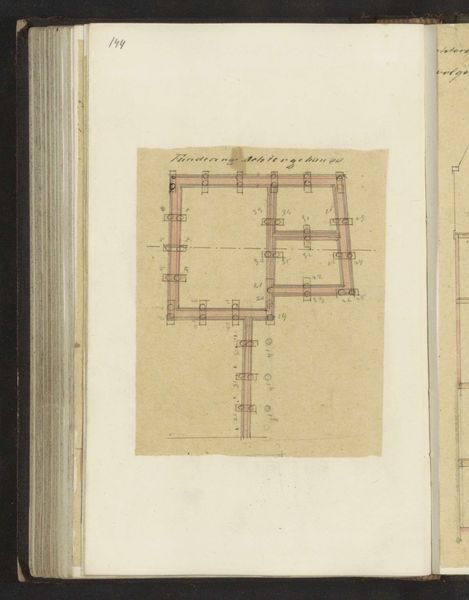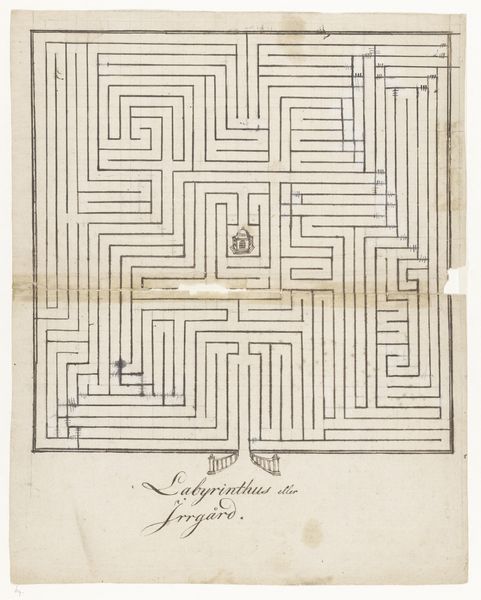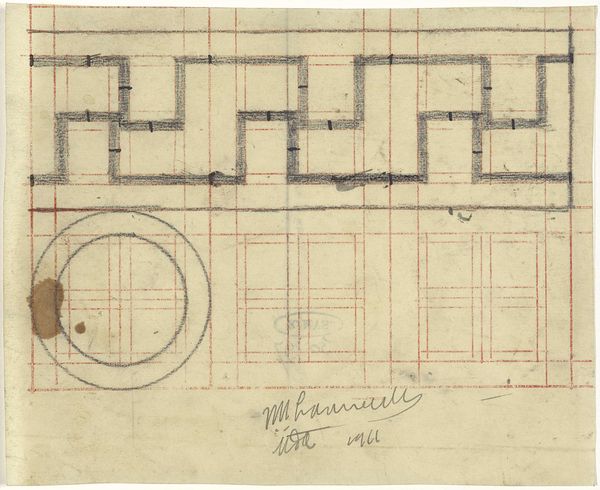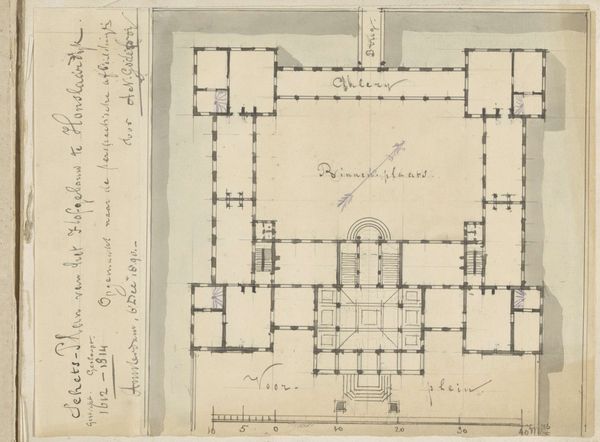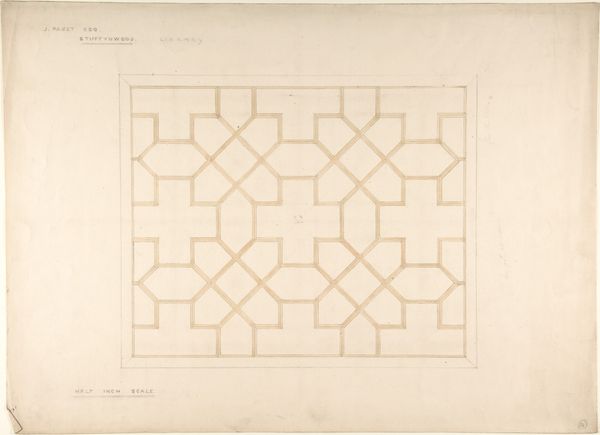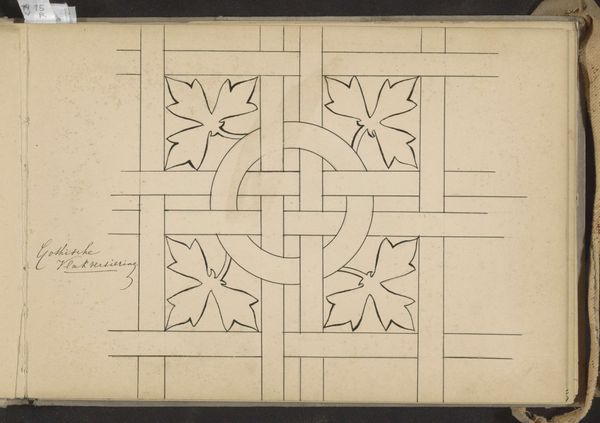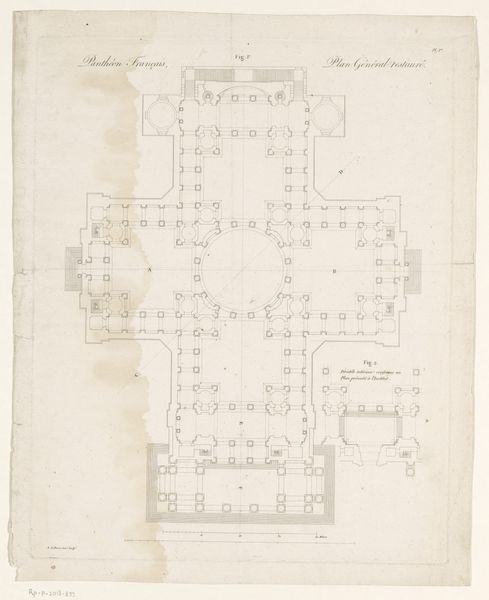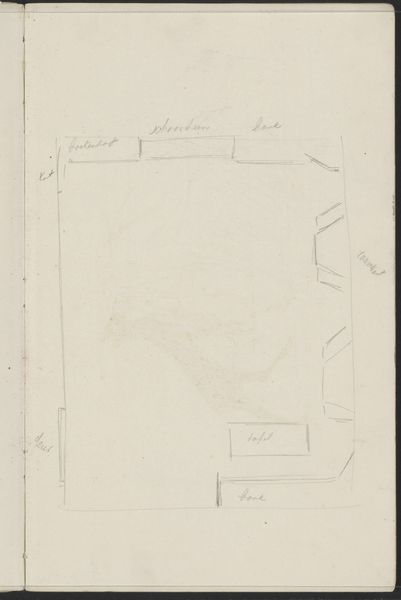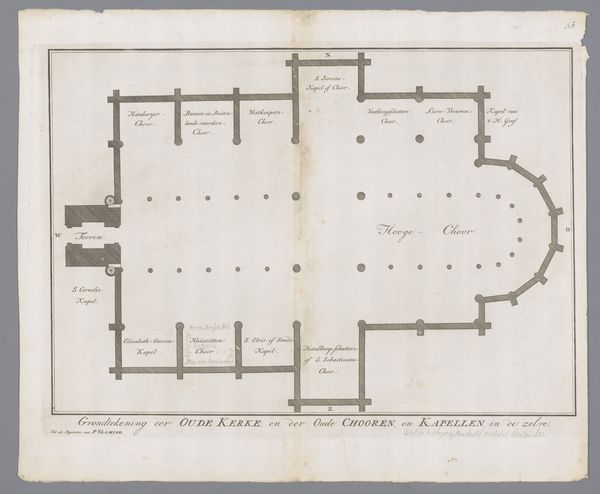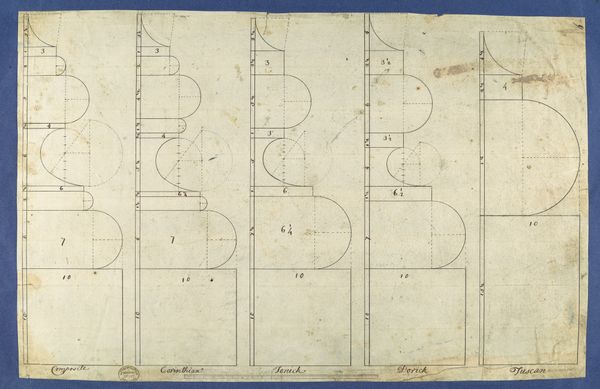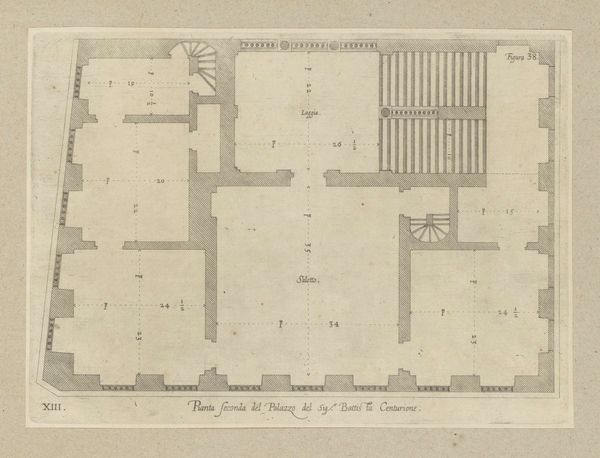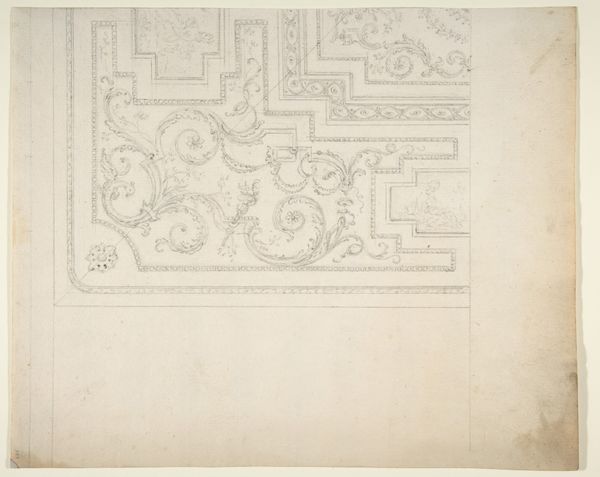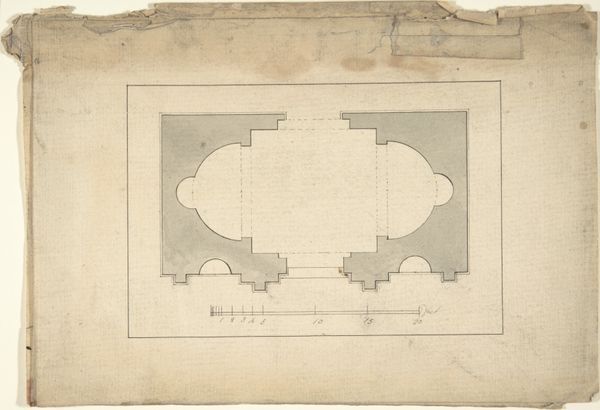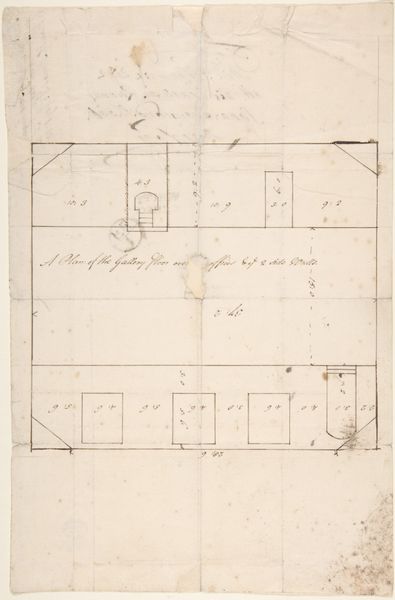
drawing, metal, pencil
#
drawing
#
aged paper
#
hand written
#
art-nouveau
#
hand-lettering
#
metal
#
hand drawn type
#
hand lettering
#
hand-written
#
hand-drawn typeface
#
fading type
#
geometric
#
pencil
#
stylized text
#
small lettering
Dimensions: height 118 mm, width 177 mm
Copyright: Rijks Museum: Open Domain
Editor:"Ontwerp voor een gesp," or "Design for a Buckle," by Mathieu Lauweriks, likely from the late 19th or early 20th century. It’s a pencil and possibly metalpoint drawing on aged paper. The geometric design is really intriguing, and I see some hand-lettering as well. What catches your eye in this work? Curator: Well, focusing on the materiality, let’s think about what it means to design a buckle intended to be fabricated out of silver and adorned with lapis lazuli. It isn’t merely about aesthetics. It speaks to the societal value placed on precious metals and rare stones, doesn't it? Who would have been able to afford such a buckle, and what statement would it make? Editor: That's a great point! It does make you think about the intended consumer. Is Lauweriks engaging in critique by rendering this design on inexpensive paper with pencil instead of directly working with the precious materials? Curator: Exactly. The act of designing, particularly with these materials in mind, brings the socio-economic context of art-making and consumption into sharp focus. The grid-like structure may refer to the regulated market for materials, each component assigned specific value and arranged in this material hierarchy. The contrast between the expensive final product and humble origins challenges the notion that the ‘design’ is purely about aesthetics. Editor: So, the medium becomes part of the message about labor and material value? Curator: Precisely! And considering it's a design *for* a buckle, a functional object, we're dealing with the intersection of art, craft, and industry, questioning the established hierarchies between them. Was Lauweriks's design ever realized in metal and stone? The survival of the drawing highlights the thought process instead of the object's purpose. Editor: I never thought of it that way before – seeing a design as a statement on the means of production. Thanks, that’s a fascinating perspective. Curator: It also gives you something to buckle down and think about.
Comments
No comments
Be the first to comment and join the conversation on the ultimate creative platform.
